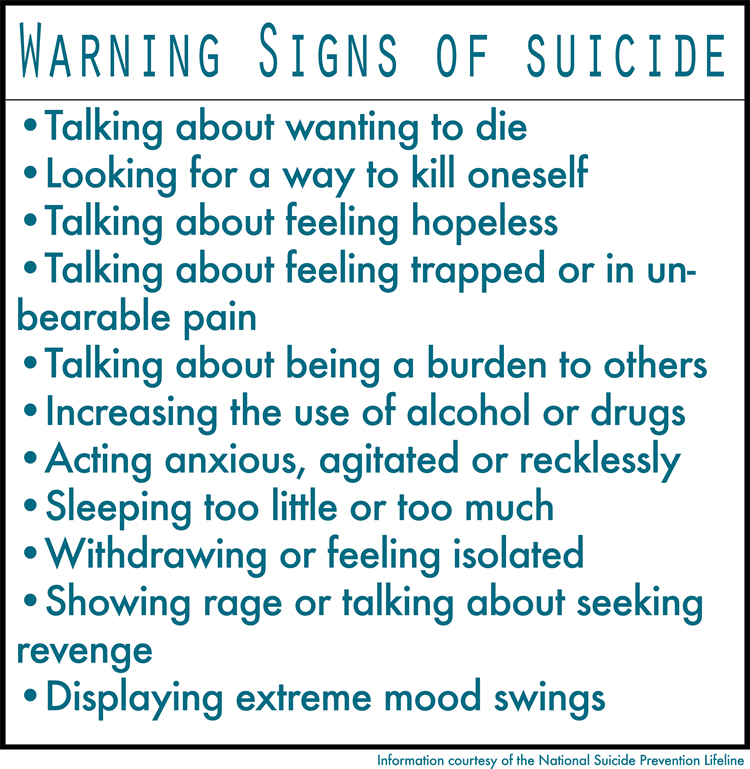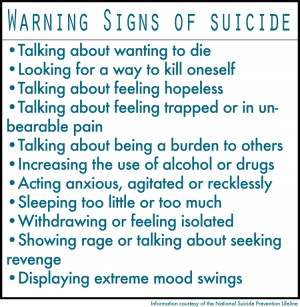An estimated seven to 10 Baylor students consider suicide each school year, and nationally 40 percent of college students know someone who attempted suicide, according to data collected by the Baylor Counseling Center. At that rate, it’s possible someone you know could be considering suicide.
It’s less than a month into school, and you know your hallmate is stressed out. You haven’t seen her in two days. She’s withdrawing. The last time you saw her she was sad and talking about feeling purposeless. You noticed she had given her roommate her grandmother’s bracelet, her most prized possession, and had recently become an organ donor.
You know these are all signs of being suicidal. You think she might be suicidal. You’re not sure if there’s anything you can do.
There is something you can do to help your struggling peer with suicidal thoughts: talk to her.
Through a program the counseling center offers called Question-Persuade-Refer, students can learn the steps to dealing with a potentially suicidal person.
“We offer a program called QPR, and it’s something anyone can do and is a proven way to prevent suicide,” said Dr. Cheryl Wooten, a psychologist at Baylor Counseling Center. QPR consists of three life saving-skills; question, persuade, refer.
The QPR program is a one-hour program that is taught in a clear and concise format, according to the QPR institute webpage.
Gatekeepers, anyone in a position to recognize a crisis and the warning signs of suicide, are given a booklet as well as a wallet-sized card that contains information about warning signs and helpful phone numbers. Suicide has become a public health issue, and the month of September is Suicide Prevention Month.
QPR is like CPR, people learn it and then can use it to save a life.
“Our QPR Gatekeeper Training for Suicide prevention is good for all audiences, including college students,” said Kathryn White, national coordinator at QPR Institute.
Suicide is a complicated issue, with many factors coming into play, The American Association of Suicidology states.
“The biggest contributor to suicide is depression and helplessness,” Wooten said. “Twenty percent of Americans experience a depressive episode in their lives.”
Suicide has become a public health issue, and the month of September is Suicide Prevention Month. Depression is very common, and very treatable. Often untreated depression leads to feelings of isolation and this can lead to suicidal feelings.
There are many warning signs in the behavior of suicidal people. These warning signs, listed by the Association of Suicidology, include but are not limited to talking about wanting to die, withdrawal from usual activities, increase in use of alcohol or drugs, talking about feeling hopeless or having no purpose in life.
Information compiled by the Association of Suicidology states that there are almost always multiple causes, and in some cases psychiatric illness is a factor. All of these causes are treatable with the help of a medical professional.
“Each year more than 36,000 Americans take their own lives and about 465,000 people receive medical care for self inflicted injuries,” the Centers for Disease Control and Prevention suicide prevention webpage states.
Stress could be a factor in why suicide is the second leading cause of death for college students.
“Depression exacerbates stress and increases isolation,” Wooten said. “So then it becomes a vicious spiral each one feeding into the other. Stress can be a catalyst for an episode.”
The counseling center also has a 24-hour crisis line students can call anytime to get help. Students can also call the suicide prevention lifeline at 1-800-273-TALK or 254-710-2467.
Students without QPR training can still help suicidal peers through direct communication and by consulting a trusted confidant to assist.
“Suicide is often taboo in our culture, Wooten said.” “The most important thing is to be able to ask friends or family members if they’re concerned about a person.
That can be as simple as saying hey tell about any thoughts you’ve had about hurting yourself.” The key is to be direct in asking and avoid hinting around.







